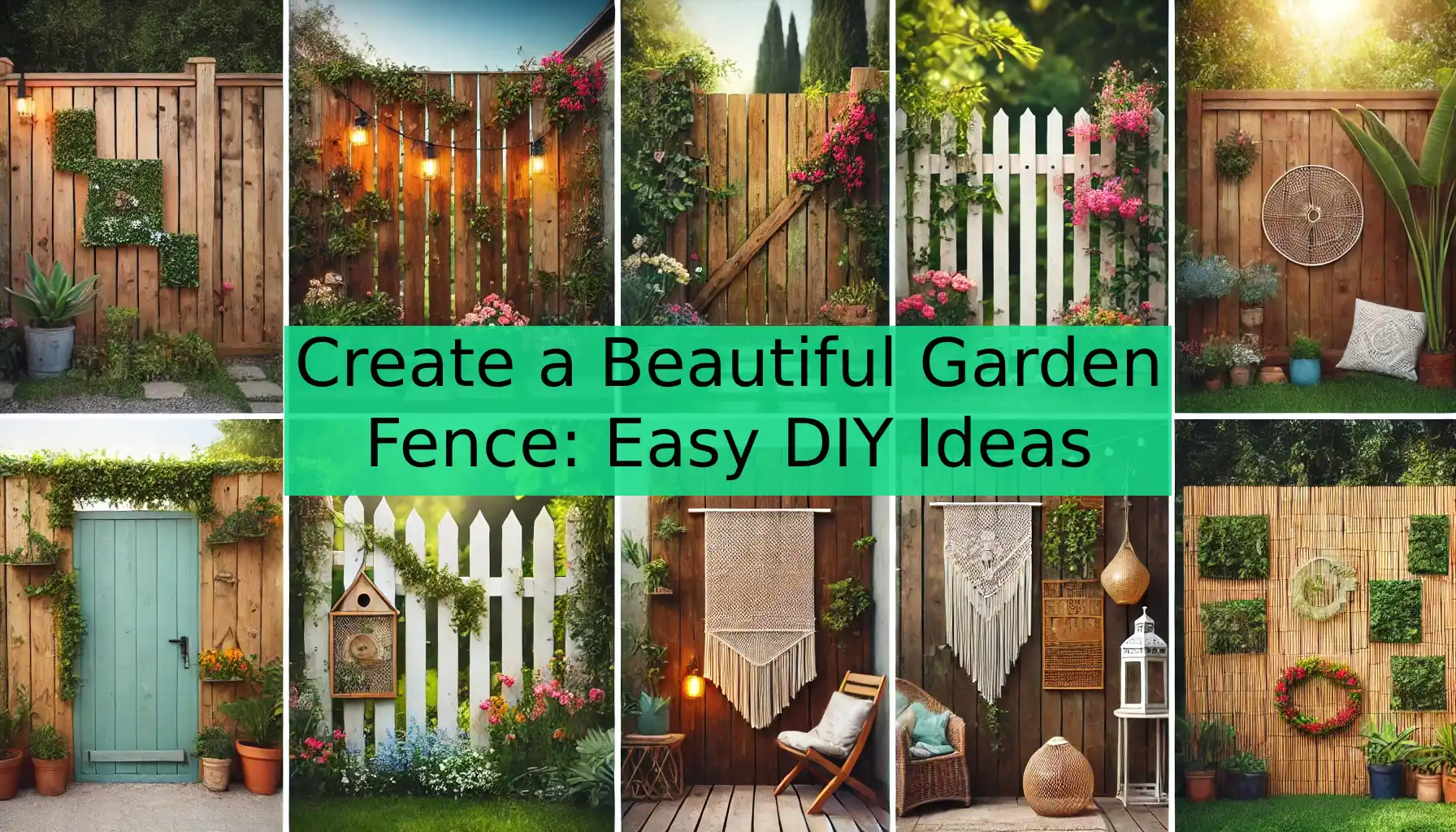A garden fence is more than just a boundary. It can be a creative expression of your personal style.
DIY garden fence ideas offer endless possibilities. From simple and functional to elaborate and decorative, the choice is yours.
Building your own garden fence can be a rewarding project. It allows you to customize the design to fit your garden’s aesthetic and needs.
This article will provide you with a variety of creative DIY garden fence ideas. It will guide you through the process of planning, choosing materials, and constructing your fence.
Whether you’re looking to create a fenced-in garden for practical purposes or to enhance your garden’s beauty, we’ve got you covered.
So, let’s dive in and explore how to DIY a garden fence that’s both functional and visually appealing.
Why Build Your Own Garden Fence?
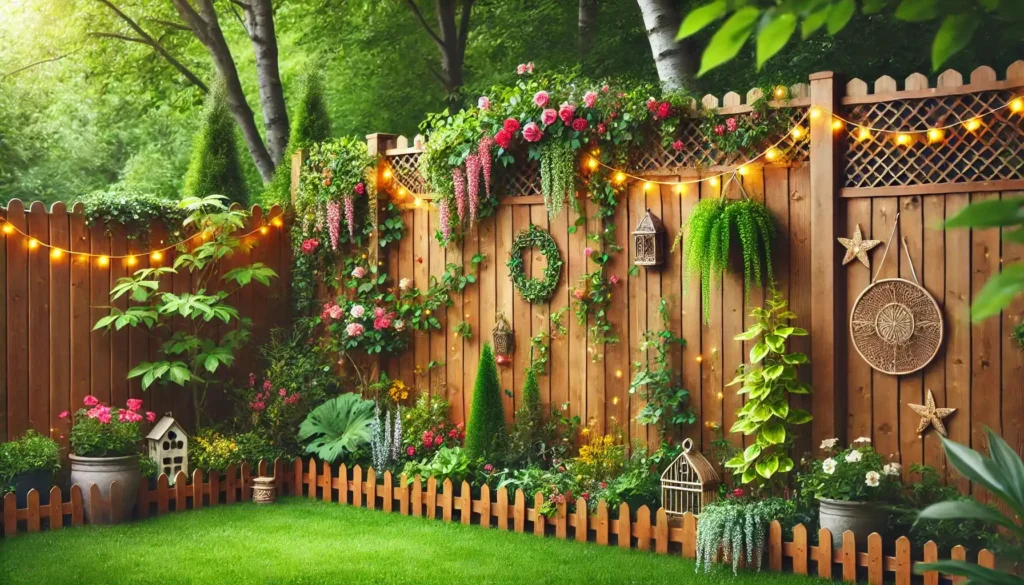
Building your own garden fence comes with many advantages. A DIY approach allows for significant cost savings compared to hiring professionals. You can choose materials and designs to fit both your budget and aesthetic preferences.
Moreover, constructing your garden fence provides a sense of accomplishment. Personalizing your space not only enhances its beauty but also its functionality. You can design it to perfectly meet the specific needs of your garden, whether for privacy, security, or aesthetic appeal. Plus, there’s nothing quite like the pride that comes with creating something with your own hands.
DIY garden ideas for small spaces
Planning Your DIY Garden Fence
Planning is crucial before diving into building a garden fence. Start by defining the purpose of your fence. Will it be for privacy, decoration, or to keep pets in check? Knowing your objective helps you design effectively.
Consider your garden’s layout and local regulations. Some areas have height restrictions or boundary rules that need adherence. This step avoids future complications.
Create a checklist for smooth execution:
- Determine your budget
- Research material options
- Sketch your design
- Measure your garden space
- Verify local regulations
Keep these steps in mind to ensure you’re prepared for each project phase. A well-thought-out plan makes construction smooth and successful.
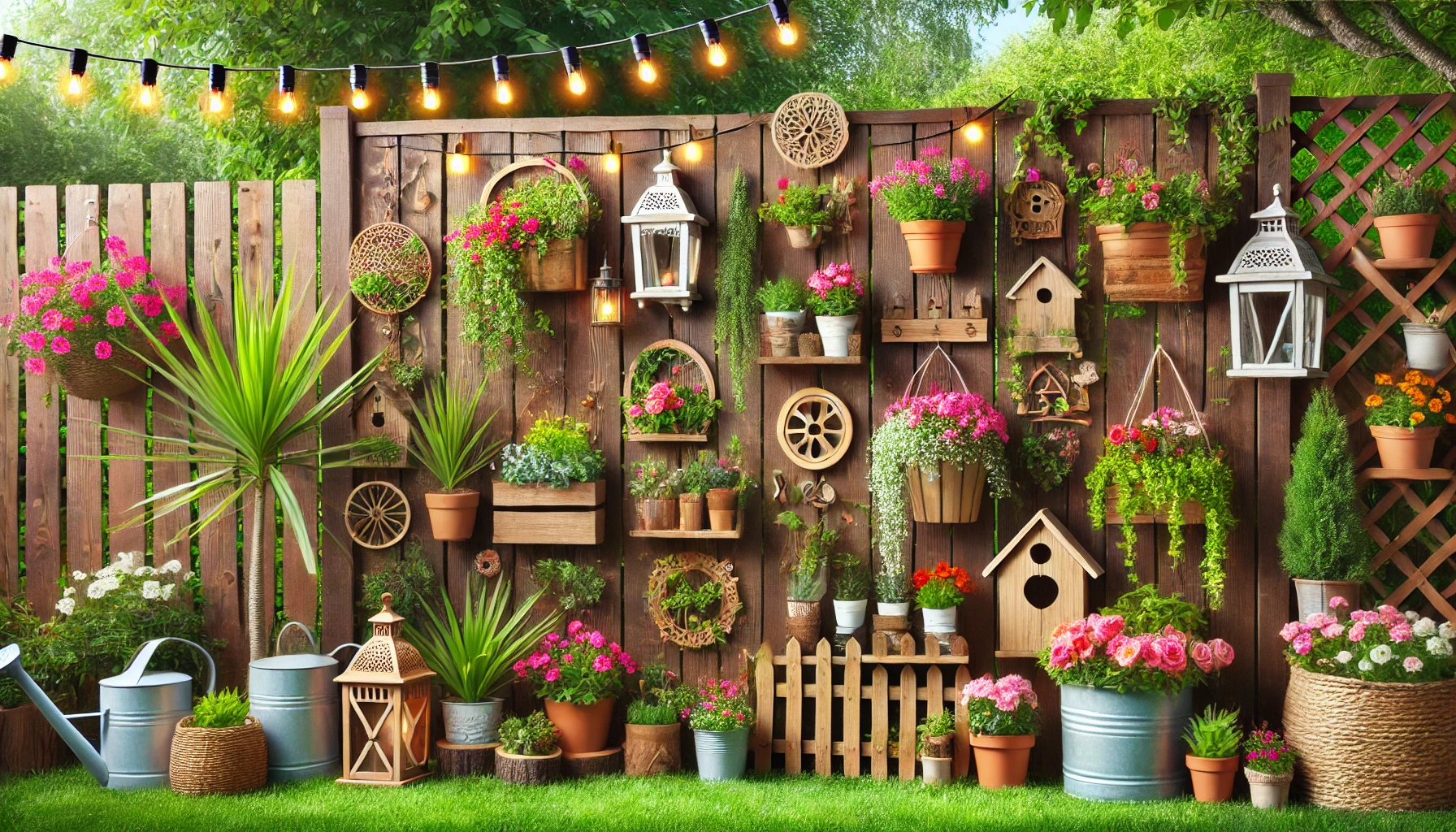
Considerations Before Building
Before grabbing tools, assess critical factors for your fence project. Understanding these can prevent costly errors.
First, verify property lines to avoid disputes. Neighbors might have rules or preferences about boundary aesthetics.
Then, research permit requirements and neighborhood regulations. Different areas might limit fence height or require specific materials. Ignoring this can lead to fines.
Here’s a quick checklist to get started:
- Verify property boundaries
- Research permit needs
- Check for neighborhood restrictions
Address these items to protect your investment and ensure a smooth building process. Preparation lays a strong foundation for creativity.
Choosing the Right Materials
Material selection is pivotal to the success and look of your fence. Consider options based on your needs, climate, and budget.
Common materials include wood, metal, vinyl, and bamboo, each with distinct benefits and drawbacks. Wood offers a natural look but requires maintenance. Vinyl is durable and low-maintenance but often more costly.
Explore each material’s pros and cons:
- Wood: Affordable, customizable, needs treatment
- Vinyl: Durable, low-maintenance, limited color choices
- Metal: Strong, long-lasting, can be expensive
- Bamboo: Eco-friendly, lightweight, limited durability
Choose based on your garden style and environmental conditions. Proper selection ensures long-term satisfaction.
Tools and Safety Equipment
Gather the right tools to streamline your DIY garden fence project. Essential tools include a tape measure, shovel, hammer, level, and saw. These tools help you build efficiently and accurately.
Safety should be a priority. Equip yourself with gloves, goggles, and sturdy footwear to avoid accidents. Don’t forget ear protection when using loud equipment.
Must-have tool and safety list:
- Tape measure and level for precision
- Hammer and saw for construction
- Shovel for digging holes
- Protective gloves and goggles
- Sturdy shoes and ear protection
Having these items ready ensures a safe and effective building experience. Proper equipment leads to successful project execution.
Very small garden ideas on a budget
Step-by-Step Guide to Building a Basic Garden Fence
Constructing a simple garden fence can elevate your outdoor space. Begin by planning the fence layout and marking the boundaries. Use stakes and string to outline the area accurately.
Next, install the fence posts. This step requires precision for stability. Dig holes for each post, ensuring they are evenly spaced and deep enough to hold securely.
After securing the posts, attach the fence panels or wire mesh. Make sure everything is level and aligned properly. This will keep your fence functional and aesthetically pleasing.
Finally, incorporate gates and access points. Ensure they align with the layout and provide convenient entry and exit. Double-check the hinges and latches for smooth operation.
Measuring and Laying Out Your Fence
Accurate measurements are crucial for a sturdy garden fence. Start by measuring the entire perimeter with a tape measure. This ensures you gather enough materials without guesswork.
Mark the fence line using stakes and string. Adjust until you’re satisfied with the alignment. Keeping the layout straight prevents structural issues later.
Once marked, double-check all measurements. This minimizes errors during construction. A precise layout is the foundation of a robust fence.
Installing Posts and Panels
Installing the posts is the next critical phase. Begin by digging holes at each marker using a shovel. Ensure holes are deep enough for stability, typically one-third of the post’s length.
Once the posts are set, fill the holes with concrete for support. Allow the concrete to cure completely before attaching panels to ensure firmness.
Attach the panels or wire mesh to the posts. Use a level to maintain alignment. Secure panels with screws, nails, or clips. Taking care ensures a stable, long-lasting structure.
Adding Gates and Access Points
Gates and access points enhance the functionality of your garden fence. Plan their locations for ease of use and aesthetic appeal. Ensure they’re wide enough for comfortable passage.
Install gate posts first. These need extra stabilization, often requiring deeper holes and additional concrete. Proper anchoring prevents the gate from sagging over time.
Attach gates securely to posts with hinges. Test the gate’s movement, ensuring it swings smoothly and aligns with the locking mechanism. A well-installed gate combines utility and style.
Creative Fencing Ideas for Every Style
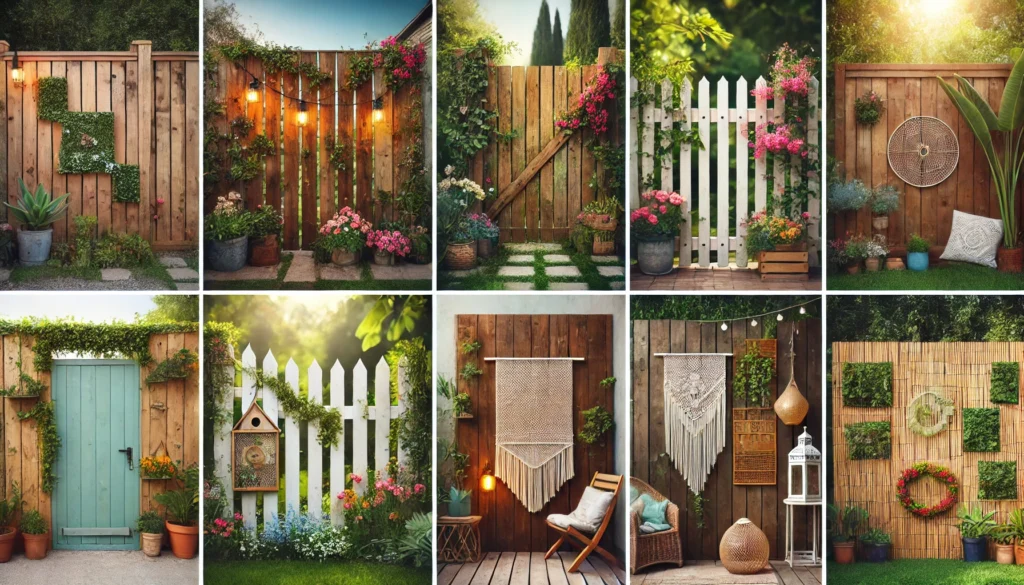
Exploring unique garden fence ideas can transform your backyard into a standout feature. Creativity brings beauty and practicality to outdoor spaces. Let’s explore diverse styles to inspire your project.
Consider the theme and function of your garden. Whether modern, rustic, or eclectic, there’s a fence design to match. A thoughtfully designed fence can add character to any garden while providing necessary protection and privacy.
Repurposed and Upcycled Fences
Upcycling materials for your garden fence offers environmental and cost benefits. Old pallets, doors, or windows can become charming fencing components. They add a rustic or vintage vibe that’s both unique and budget-friendly.
Using repurposed materials creates a one-of-a-kind fence. It’s also an opportunity to reduce waste. Look for items in local thrift shops or salvage yards. They often have treasures waiting to be transformed into creative fence designs.
Incorporating Nature into Your Fence Design
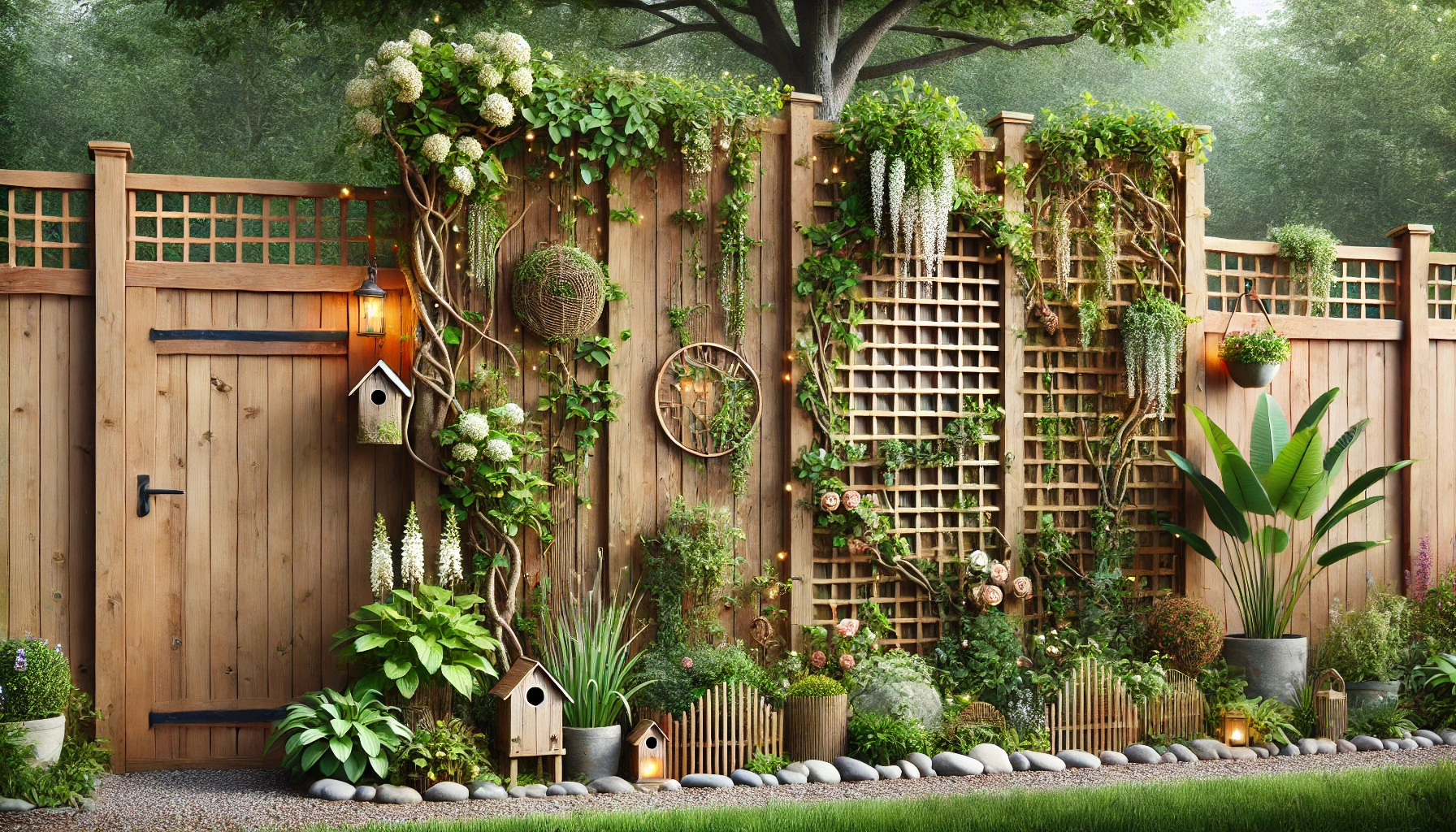
Nature-inspired fences integrate beautifully with garden landscapes. Consider using living elements like hedges or vertical planters within the fence. These elements blend functionality and aesthetics seamlessly.
Alternatively, install a trellis for climbing plants. Let vines like ivy or jasmine weave through your fence for a lush, green backdrop. This approach not only beautifies your garden but also provides ecological benefits, supporting biodiversity.
Decorative Touches for Personal Flair
Adding personal touches to your garden fence makes it a reflection of your style. Paint your fence in vibrant colors or use stencils for artistic designs. These expressive touches turn a functional item into an art piece.
Incorporate decorative elements such as lanterns, planters, or birdhouses. Hanging these items from your fence adds dimension and interest. These enhancements can create a welcoming and visually appealing garden space.
Maintenance and Upkeep of Your DIY Garden Fence
A well-maintained garden fence enhances its beauty and longevity. Regular care ensures it withstands weather and wear. Incorporating simple maintenance routines can keep your fence in top shape.
Start by considering seasonal adjustments and necessary upgrades. Regular maintenance not only preserves your fence but also saves money on future repairs. Let’s explore practical ways to maintain your garden fence effectively.
Regular Inspection and Repair
Frequent inspections are critical to detecting potential issues early. Walk around your fence periodically, looking for signs of wear. Check for loose boards, rust, or damage caused by pests.
Promptly repair any damaged sections to avoid escalation. Reattach loose panels and replace any broken slats. Addressing issues quickly preserves your fence’s integrity and prevents further deterioration.
Weatherproofing and Treating Materials
Weatherproofing your fence is crucial to protect it from harsh elements. Apply a sealant or stain to wooden fences to prevent moisture absorption. These treatments help in resisting rot and decay.
Consider a protective finish for metal fences to combat rust. Regular treatment ensures that your fence stays durable and visually appealing year-round. Weatherproofing treatments prolong the lifespan and enhance the appearance of your garden fence.
Conclusion: The Rewards of a DIY Garden Fence
Creating your own garden fence offers numerous benefits. It allows personalization, and cost savings, and enhances your garden’s appeal. The process is fulfilling, presenting an opportunity to showcase your creativity. With proper planning and maintenance, your DIY fence will remain a standout feature for years.

